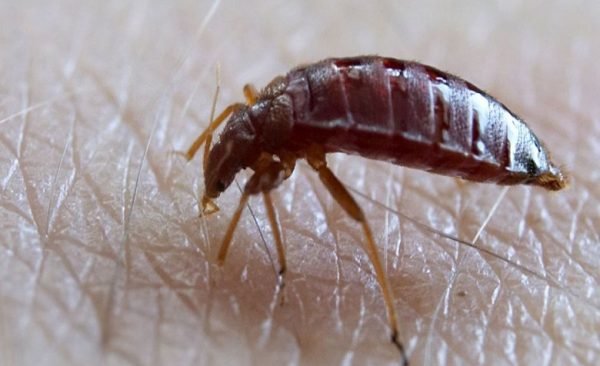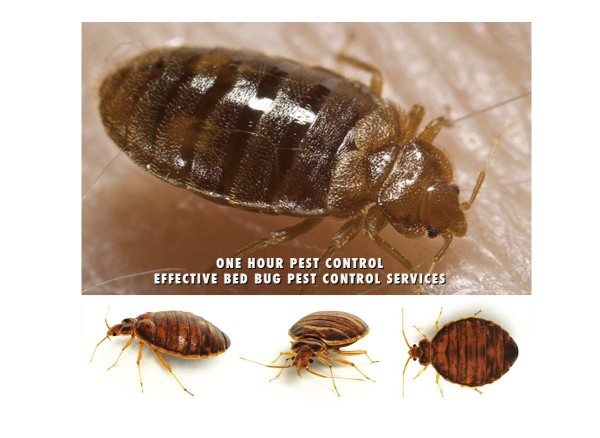How to Recognize Bed Bug Bites and Treat Them Quickly
Wiki Article
Obtain Enlightened About the Types of Insect Control Techniques and Their Advantages for Home Owners
Recognizing the numerous insect control methods readily available to home owners is necessary for efficient pest monitoring. House owners who are well-informed can make critical options that not only address pest concerns however also improve the overall top quality of their living atmosphere.Chemical Pest Control Approaches
Chemical insect control approaches are an important component of incorporated insect monitoring methods for homeowners looking for effective remedies to pest infestations. These approaches involve the application of chemical materials designed to remove or deter parasites that threaten individual building, health, and convenience. Common chemicals utilized consist of insecticides, herbicides, fungicides, and rodenticides, each tailored to target details insects.The key advantage of chemical bug control is its quick effectiveness; numerous formulas give immediate results, minimizing pest populaces considerably quickly. In addition, advances in chemical formulas have caused items that are extra eco-friendly and have reduced poisoning degrees for non-target microorganisms when used correctly.

Organic Pest Control Methods
Natural insect control approaches have acquired prominence as house owners look for much safer and more lasting choices to traditional chemical methods. Organic pest control techniques make use of all-natural predators, bloodsuckers, or pathogens to manage parasite populaces successfully. This method is not just eco-friendly but also lessens the danger of damage to non-target varieties, including valuable bugs and wild animals.Among the most typical organic control methods includes presenting all-natural predators right into the setting. For example, ladybugs can be utilized to regulate aphid populaces, while nematodes target soil-dwelling pests like grubs. Additionally, parasitoids-- organisms that reside on or within a host-- can be used to regulate specific insect types by laying eggs inside them, inevitably bring about their demise.
Another method is using biopesticides, which are obtained from all-natural products such as minerals, bacteria, or plants (bed bug exterminator). These products can effectively target pests while positioning very little danger to people and animals. In general, biological insect control techniques offer property owners with an efficient means of pest management that straightens with eco-friendly concepts, advertising a healthier living environment while reducing reliance on artificial chemicals
Mechanical Bug Control Methods
Mechanical insect control techniques encompass a selection of approaches that physically avoid or eliminate parasites without making use of chemicals. These methods are particularly beneficial for home owners looking for environmentally pleasant choices while guaranteeing the safety of their home.One typical method is making use of obstacles, such as webs, screens, and catches, which avoid pests from going into homes or specific locations. As an example, mounting window displays can efficiently maintain bugs out, while using physical obstacles around yards can prevent bigger insects like deer or rabbits. In addition, mechanical traps created for rodents can catch and remove these parasites without the requirement for toxic compounds.
Another efficient method involves using vacuums and mops to get rid of insects straight from surfaces. Normal cleaning and upkeep can considerably lower pest populations by getting rid of food resources and hiding places. Using devices like ultrasonic bug repellents can discourage different bugs through audio waves that are unpleasant to them yet inaudible to human beings.
Social Bug Control Practices
Cultural pest control practices concentrate on customizing the atmosphere and administration techniques to create conditions that are less favorable to pest infestations. These techniques are essential in maintaining a balanced environment and decreasing the reliance on chemical treatments. By altering farming practices, property owners can successfully hinder pests while promoting plant health.One usual strategy consists of plant turning, which interrupts the life cycles of insects by changing the kinds of plants expanded in a certain area exterminator (bed bug exterminator). This not only decreases pest populaces however also boosts dirt health and wellness. Additionally, intercropping-- growing varied crops in proximity-- can perplex bugs and decrease their ability to situate their recommended host plants
Water administration is another critical facet of cultural practices. Correct irrigation strategies can stop standing water, which works as a breeding place for insects and other parasites. Additionally, maintaining sanitation in and around the home, such as routinely getting rid of debris and food waste, can significantly minimize insect destination.
Incorporating these social practices into a thorough insect administration strategy enables home owners to create an atmosphere that normally discourages bugs, thereby improving the performance of various other control methods while advertising lasting horticulture and landscaping.

Integrated Parasite Monitoring Approaches
Integrated Parasite Monitoring (IPM) stands for an all natural strategy that incorporates numerous approaches to properly take care of parasite populaces while lessening ecological effect. This approach integrates biological, social, physical, and chemical techniques to accomplish sustainable insect control. By assessing pest populations and their all-natural opponents, IPM highlights monitoring and identifying parasites prior to carrying out control steps.One of the core concepts of IPM is using thresholds, which establish the degree of bug activity that warrants treatment. This makes sure that treatments are applied just when required, reducing the dependence on chemical pesticides. Biological control methods, such as presenting natural predators or bloodsuckers, work in combination with cultural practices like plant rotation and environment control to disrupt pest life process.
Additionally, IPM urges using least-toxic chemical options when treatment is required, focusing on products that posture very little risk to non-target microorganisms and the environment. For home owners, adopting IPM comes close to not only boosts the efficacy of bug management yet also advertises a healthier living atmosphere, cultivating biodiversity and decreasing chemical direct exposure. Ultimately, IPM encourages homeowners to make enlightened decisions that balance parasite control with ecological obligation.
Final Thought
In verdict, recognizing the different insect control methods empowers homeowners to make enlightened choices concerning pest management. Each approach-- chemical, organic, mechanical, cultural, and integrated insect monitoring-- supplies unique benefits that provide to different needs and choices.Comprehending the various parasite control techniques available to home owners is crucial for efficient pest monitoring.Chemical insect control methods are a critical part of integrated parasite administration techniques for property owners looking for efficient solutions to pest invasions. In general, organic insect control strategies offer home owners with an effective methods of insect monitoring that lines up with eco-friendly concepts, advertising a healthier living environment while minimizing dependence on synthetic chemicals.
Social pest control methods concentrate on modifying the atmosphere and monitoring techniques to produce problems that are less favorable to pest problems.In conclusion, comprehending the numerous insect control techniques encourages homeowners to make educated choices regarding pest management.
Report this wiki page